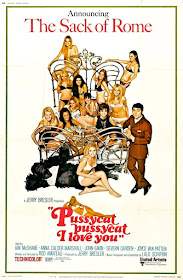Significant as
the first appearance of Telly Savalas’ popular TV crimefighter Lt. Theo Kojack,
whose last name was altered slightly once the character earned his own series a
few months later, The Marcus-Nelson
Murders works well as a stand-alone story about the complexities of police
work. Extrapolated from a real-life case that
informed the Supreme Court’s famous Miranda ruling, The Marcus-Nelson Murders depicts the callousness with which the
NYPD railroads an innocent man who makes an easy patsy for a high-profile
crime. The Miranda ruling stipulated that suspects must be informed of their
rights at the time of arrest, but the young man at the center of The Marcus-Nelson Murders gets arraigned
on murder charges before he even realizes what’s happening. As written by the
highly capable dramatist Abby Mann (an Oscar winner for 1961’s theatrical
feature Judgment at Nuremberg), this
adaptation of Selwyn Rabb’s book Justice
in the Back Room has the flavor and toughness of Sidney Lumet’s myriad New
York crime films, right down to the varied shadings of morality.
The story
begins with a mysterious attacker invading a Manhattan apartment. Two of the
women who live there are brutally murdered during the home invasion. Public attention
compels the police to throw enormous manpower onto the case. Among the
investigators is Kojack. He mostly lingers on the sidelines for the first half
of this long film, though director Joseph Sargent periodically features
domestic interludes between Kojack and his on-again/off-again lover, Ruthie
(Lorraine Gary). After cops in Brooklyn arrest a simple young black man, Lewis
Humes (Gene Woodbury), on an unrelated charge, they become convinced Humes was
responsible for the murders. The Brooklyn cops coerce a confession with a toxic
combination of charm and violence. Kojack moves to the foreground after Humes
is indicted, and the detective senses something isn’t right about the
evidence incriminating Humes. What follows is the meticulous process
by which Kojack and crusading lawyer Jake Weinhaus (José Ferrer) pursue the
truth. Along the way, thorny issues (institutionalized racism, police
procedure, unreliable eyewitness testimony) make it difficult for the heroes to
see daylight, even as Humes rots in a cell.
The
Marcus-Nelson Murders covers a lot of ground, so at times it feels more
like a miniseries than a movie. Some supporting characters resonate, including
aggressive Brooklyn prosecutor Mario Portello (Allen Garfield), while others
get lost in the shuffle. The picture also has false notes, such as casting
B-movie stalwart Marjoe Gortner as a Puerto Rican. Nonetheless, the overarching
theme—how the pursuit of justice intersects with the rights of the accused—comes
through powerfully. Excepting the jaded narration he provides, Kojack is not the film’s most interesting element, so it’s no surprise producers overhauled
the character for his weekly series, transforming the rechristened “Theo Kojak”
from a principled observer to a wisecracking rulebreaker.
The Marcus-Nelson Murders: GROOVY
















